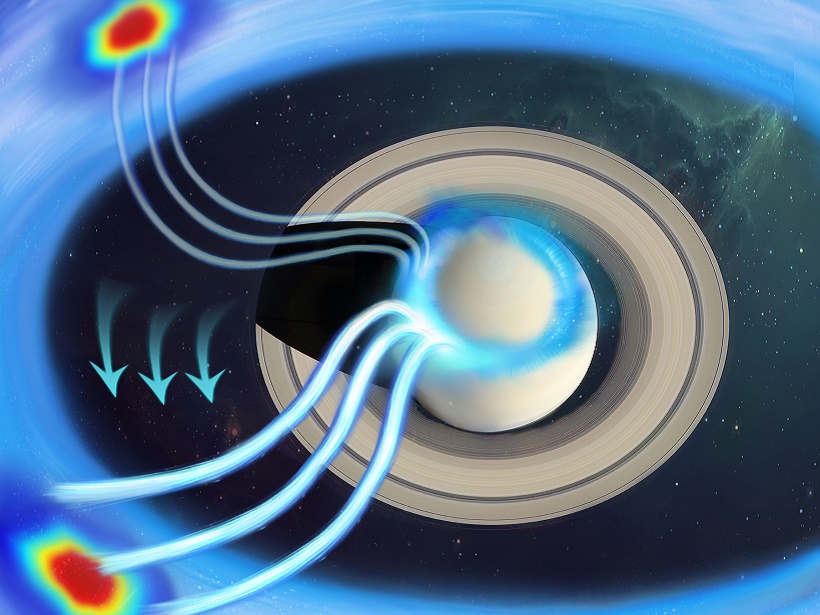The bright aurorae dancing in the sky are produced by charged particles traveling along the magnetic field lines from tens of planetary radii. By why do aurorae rotate at Saturn but not at Earth?
CC BY-NC-ND 2018
Christensen Receives 2018 Fred Whipple Award
Philip Christensen will receive the 2018 Fred Whipple Award at AGU’s Fall Meeting 2018, to be held 10–14 December in Washington, D. C. The award recognizes an individual who has made “outstanding contributions in the field of planetary science.”
Johnson Receives 2018 Ronald Greeley Early Career Award in Planetary Sciences
Brandon Johnson will receive the 2018 Ronald Greeley Early Career Award in Planetary Sciences at AGU’s Fall Meeting 2018, to be held 10–14 December in Washington, D. C. The award recognizes “significant early career contributions to planetary science.”
Enormous Impact Crater Spotted in Greenland Under Glacial Ice
Ice-penetrating radar revealed a 31-kilometer impact crater—one of the world’s largest—in northwestern Greenland that might have been formed fewer than 20,000 years ago.
Fish Continued to Spawn as Hurricane Harvey Swirled Overhead
Spotted seatrout, one of the most popular fish to catch on the shores of Texas, carried on their nightly baby-making ritual despite the havoc of a category 4 storm above.
Ren Receives 2018 Nanne Weber Early Career Award
Haojia Ren will receive the 2018 Nanne Weber Early Career Award at AGU’s Fall Meeting 2018, to be held 10–14 December in Washington, D. C. The award is given “in recognition of sustained and unique contributions to paleoceanography and paleoclimatology research.”
Costa Receives 2018 Harry Elderfield Student Paper Award
Kassandra Costa will receive the 2018 Harry Elderfield Student Paper Award at AGU’s Fall Meeting 2018, to be held 10–14 December in Washington, D. C. The award recognizes “an exemplary manuscript from a Ph.D. graduate student and exceptional promise for continued contributions in the fields of paleoceanography and/or paleoclimatology.”
New Definition of Potential Spicity by the Least Square Method
A thermodynamic function of the potential spicity is defined and it is orthogonal to the potential density in the least square sense.
Hönisch Receives 2018 Paleoceanography and Paleoclimatology Willi Dansgaard Award
Bärbel Hönisch will receive the 2018 Willi Dansgaard Award at AGU’s Fall Meeting 2018, to be held 10–14 December in Washington, D. C. The award is given in recognition of the awardee’s “research impact, innovative interdisciplinary work, educational accomplishments (mentoring), societal impact, or other relevant contributions and to acknowledge that the awardee shows exceptional promise for continued leadership in paleoceanography or paleoclimatology.”
Tiny Marine Shells Reveal Past Patterns in Ocean Dynamics
A 400,000-year calcium carbonate record from the ocean floor sheds light on deep-ocean circulation and on mechanisms driving climate patterns and atmospheric carbon dioxide concentrations.





